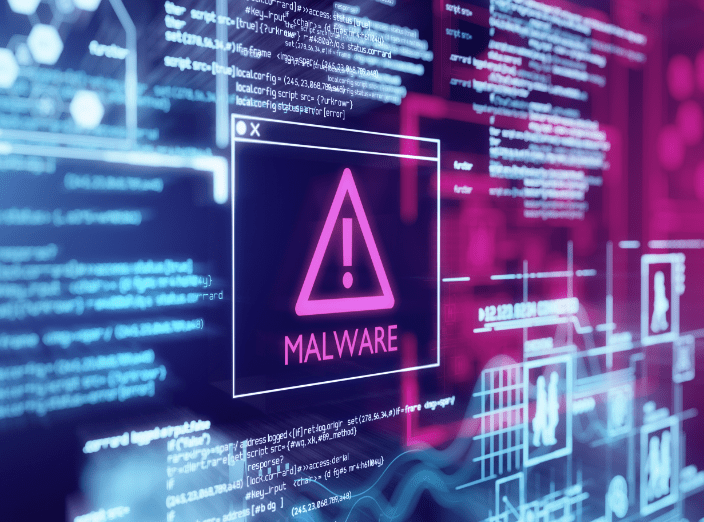Cybersecurity is a never-ending battle as there are always new threats to consider and protect against. One of the most difficult types of cyber threats to tackle is zero-click malware. These are especially dangerous because, unlike more common cyberattacks, this attack is stealthy, does not need human intervention, and devices can be compromised without the victim being aware.
In recent years, zero-click malware has occasionally made the headlines. According to Statista, the global number of malware attacks reach 5.5 billion in 2022, a 2% increase over the previous year.
Zero-click malware, as the name indicates, requires no clickable action to be performed to infuse the malware. This implies that even businesses and users with the most advanced devices, a single layer of the defense system, and extremely cautious can still fall victim to zero-click malware attacks.
As a result, due to the sophisticated techniques and disastrous consequences associated with zero-click malware, it is important for you to know how to keep from falling victim to it with effective cybersecurity strategies. This article explains what zero-click malware is and how you can keep yourself from falling victim.
What is Zero-Click Malware
Zero-click malware refers to a fully remote cyber-attack that can infect a device without requiring the user to click or perform any interaction or action.
Unlike traditional malware which typically relies on user-initiated actions such as downloading an infected file or clicking on a malicious link, zero-click malware takes advantage of vulnerabilities or weaknesses in software, operating systems, or communication protocols to infiltrate a device stealthily. This means that a hidden text message, image, or phone call can inject a code into the target’s mobile device, potentially compromising it.
Zero-click malware can take the form of a virus, worm, trojan horse, spyware, or ransomware. This malware generally operates silently in the background, so victims are unaware of any problems until it is too late.
How Does Zero-Click Malware Work?
Zero-click malware exploits operate by taking advantage of a wide range of vulnerabilities in software or hardware. These vulnerabilities can exist in anything from the operating system to a specific application or even hardware such as a router or modem. For example, they may take advantage of flaws in the way the software handles images or videos, or they may exploit flaws in the way devices connect to wireless networks.
Once the attacker identifies the vulnerability, the attacker can then create a payload that exploits it without requiring user interaction. This payload can be delivered through a variety of channels, such as SMS messages, email, or even social media platforms.
After successfully executing a zero-click the zero-click malware can carry out a variety of malicious actions. It has the ability to steal sensitive information, spy on you, use your device to launch attacks on other systems, or even install malware.
How to Prevent Falling Victim to Zero-click Malware
Falling victim to zero-click malware can be a serious threat to your digital security. o help prevent falling victim to zero-click malware, consider the following measures:
Use patch management
To prevent being a victim of zero-click malware, it is essential you develop a comprehensive patch management process and policy that is understood by all employees and aligns with the security, IT operations, and development teams of your business.
Using patch management keeps your operating systems and software apps up-to-date. Also, regularly install and update patches, as these updates often include security fixes that address the loopholes and vulnerabilities exploited by zero-click malware.
Update your apps and devices regularly
In addition to patch management, ensure that all your applications, including web browsers, plugins, and mobile apps, are updated to their latest versions. Zero-click malware takes advantage of outdated operating systems, devices, and applications. Keeping devices and apps up to date can reduce the vulnerability of devices to these attacks.
Be skeptical of email attachments
Email attachments are a common way for zero-click malware to be delivered. When opening attachments, be cautious, especially if they come from an unknown sender. Scan attachments with an antivirus or anti-spyware software before opening them, and if you are unsure about the legitimacy of an attachment, delete it.
Use Anti-Spyware and Anti-Malware solution
Zero-click malware is commonly used to install spyware and other malware on devices. As a result, install anti-spyware and anti-malware solutions on your devices. The use of these powerful preventative solutions can help in detecting and removing various types of malware, including zero-click threats, as well as mitigate the impact of a successful zero-click attack.
Ensure these solutions are regularly updated to ensure they can effectively identify the latest threats. Also use additional internet security tools such as a firewall, Chrome security extensions, and Firefox add-ons.
Installing Next-Generation Antivirus Solutions (NGAV)
Next-Generation Antivirus Solutions are designed to protect businesses against modern cyber threats such as zero-click malware. Traditional antivirus solutions detect and block known threats using signature-based detection. In contrast, NGAV Solutions detect and stop known and unknown threats using advanced techniques such as behavioral analysis, machine learning, and artificial intelligence.
Also, Next-Generation Antivirus Solutions can help your business stay ahead of constantly evolving cyber threats and protect sensitive data and systems from malicious attacks.
Make use of multi-factor authentication
Enable multi-factor authentication (MFA) wherever possible, especially for critical accounts like email and online banking. Multi-factor authentication adds an extra layer of security that makes it harder for attackers to gain unauthorized access.
Also, with the ongoing battle of password vs. passkeys, pick the best one for you, depending on your level of security
Keeping multiple current backups of your data
Always back up in the cloud storage platform, a hard drive, or a USB pen drive. While this isn’t a prevention method, it does help to reduce the impact of your data getting completely lost. If malware corrupts your data, you can restore it using your backups.
Uninstall old software
Remove any old or unused software from your devices. Inform your IT team and employees that outdated software may have unpatched vulnerabilities that cybercriminals can exploit through zero-click malware, which can pose a serious security risk to your company.
Regularly review your installed applications and remove any that you no longer need or use. If you only use the software occasionally, it is best to buy a new one with the same or similar functions.
Protect Your Devices from Zero-Click Malware Attacks with Partner IT
Partner IT provides a variety of cybersecurity solutions to help safeguard your devices and data against zero-click malware and other threats.
Contact us today to learn more about how we can assist you in protecting your digital life.



